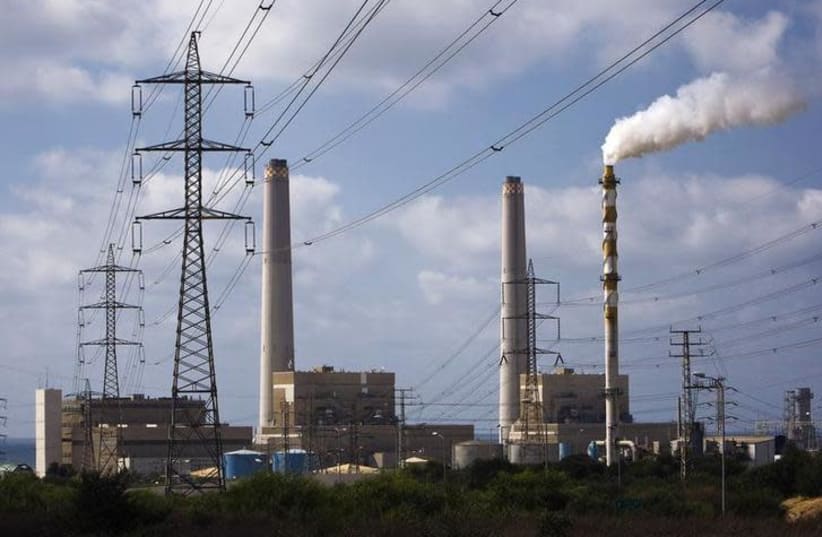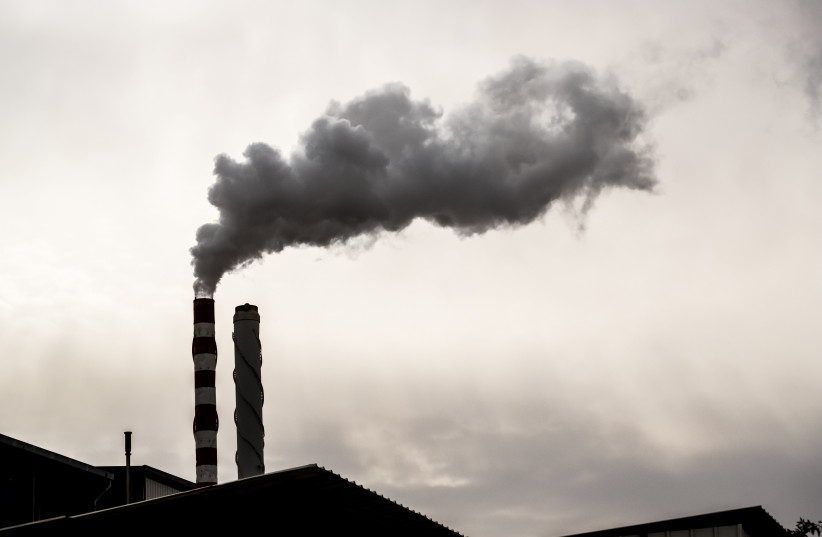Despite decreasing emissions of most greenhouse gases, per-capita emissions of nitrogen oxides in Israel are still double those in the European Union, and the emission of cancer-causing chemicals increased in 2020, according to an Environmental Protection Ministry report on pollution caused by the 570 biggest factories in Israel.
Published on Monday, the report found that while many emissions fell by between 7% to 18%, the amount of cancer-causing emissions rose by 14% compared to 2019 and the amount of non-methane volatile organic compounds (NMVOCs) rose by 4% compared to 2012. NMVOCs contribute to the formation of ozone and some are hazardous to human health.
The ministry stressed that at least some of the decreases in emissions were caused by reductions in travel and activity in the economy during the coronavirus crisis, but added that at least some would have occurred regardless.
Concerning nitrogen oxide, which can harm the human respiratory system, emissions fell by 10% compared to 2019, but Israel still produces double the emissions per capita than are found in the EU. The main source of nitrogen oxide emissions in Israel is the coal-fired power plant in Hadera, where some of the production units still operate without advanced facilities for reducing nitrogen oxides and sulfur oxides.
In Haifa Bay, one of Israel's main heavy industry areas, emission rates have dropped between 44% and 95% since 2012. In 2020, the demand for fuel distillates dropped, alongside a 15% reduction in activity at the BAZAN petrochemical company, due to the coronavirus crisis. This reduction led to a decrease in the emissions of carbon dioxide, sulfur oxide, NMVOCs, benzene and other pollutants.
A 10% increase in nitrogen oxide emissions was recorded in Haifa Bay due to a 19% increase in emissions at the Haifa power plant, but sulfur oxide emissions dropped by 58% due to the closure of the Shemen Industries plant, as well as the implementation of a plan at BAZAN to reduce emissions, according to the report.
The other industrial zones examined were in Ashkelon, Ashdod, Mishor Rotem and Neot Hovav. The lowest level of emissions was recorded at Neot Hovav, while the highest levels were recorded in Ashkelon and Mishor Rotem near Dimona.
The number of carcinogens rose in 2020 due to increases in benzene emissions recorded at the Rotem Amfert Negev chemical plant, in benzene and toluene at Yehuda Steel in Ashdod, and at the ADAMA agricultural company also in Ashdod. Additionally, there was a 23% increase in reports of asphalt plants and an increase at the Ganey Hadas landfill.
THE ENVIRONMENTAL Protection Ministry found that air pollution cost the country about NIS 12.9 billion in external costs in 2020, including NIS 7.7b. due to greenhouse gas emissions. The external costs caused by carbon dioxide emissions rose by 20% last year.
External cost expresses the negative effects on human health and the environment caused by emissions as a monetary value. The cost is calculated in order to help decision-makers take into account the value of these damages when making policy decisions.
The top three polluting factories in Israel in 2020 were the Orot Rabin Power Plant in Hadera, the Rutenberg Power Plant in Ashkelon and Nesher Israel Cement Enterprises in Ramla, costing the country over NIS 5.5 billion in external costs due to pollution.
Despite much progress in lowering emissions, Israel’s per capita methane emissions are still higher than the global average, with 1.3 tons being produced per capita, while the world average stands at 1.07 tons and the EU average stands at 0.89 tons. Methane makes up 12% of Israel’s greenhouse gas emissions.
The Environmental Protection Ministry plans to focus more on methane emissions in the coming year.
The ministry also aims to reduce the emissions of greenhouse gases from solid waste, a major source of methane emissions, by at least 47% by 2030 compared to the levels in 2015. It also aims to reduce the amount of municipal waste in landfills by 71% by 2030 compared to the amount dumped in landfills in 2018.
Environmental Protection Minister Tamar Zandberg said in response to the report that the “climate crisis is already evident at an external cost of billions of shekels.”
“We are working hard with our partners in the government, to ensure the reduction of emissions into the air and to protect the public, the environment and nature in Israel,” she said. “Today we share with the public the latest information we have, in order to harness everyone to work together to reduce harm to the environment and health and increase public participation.”

